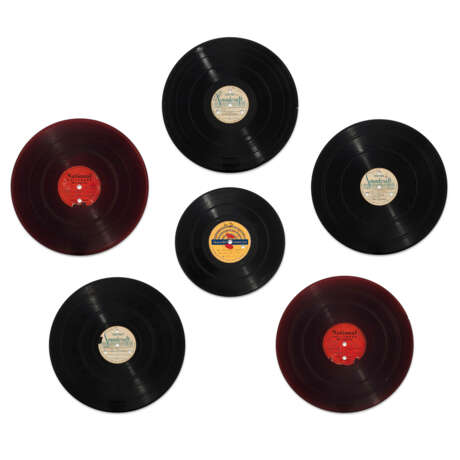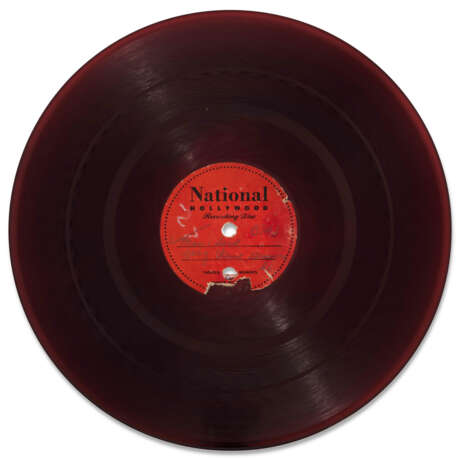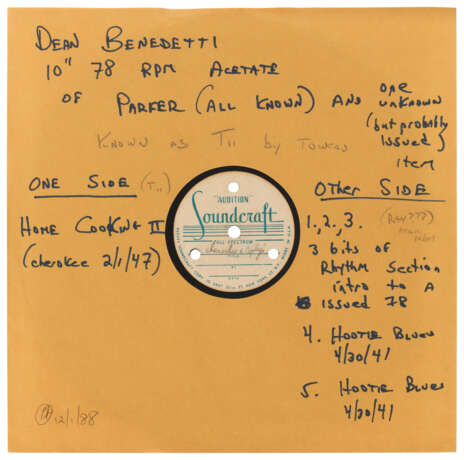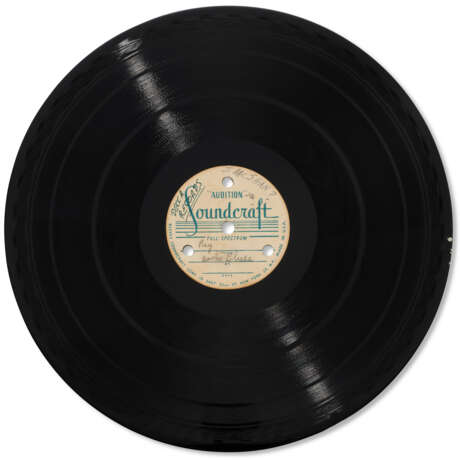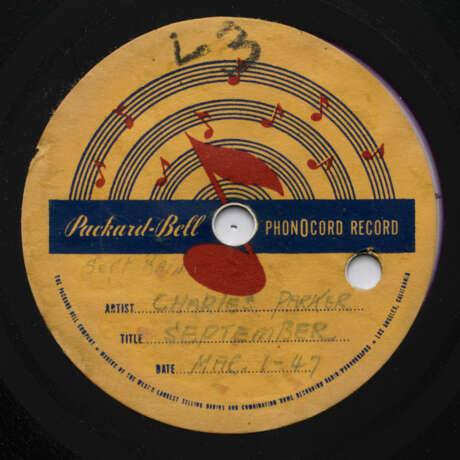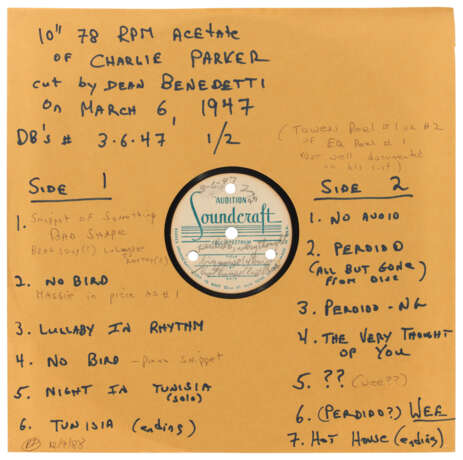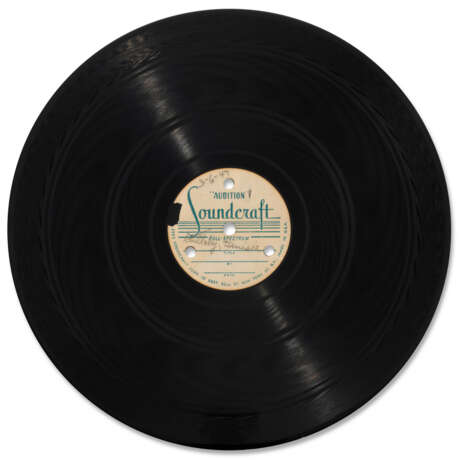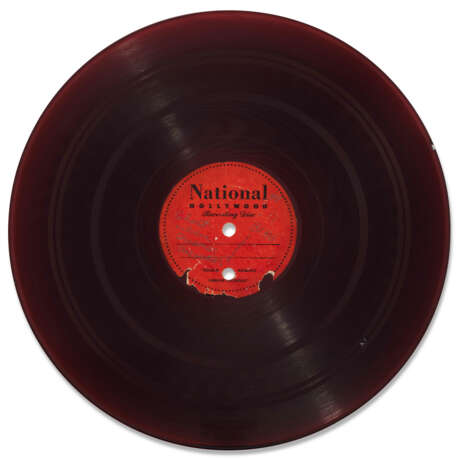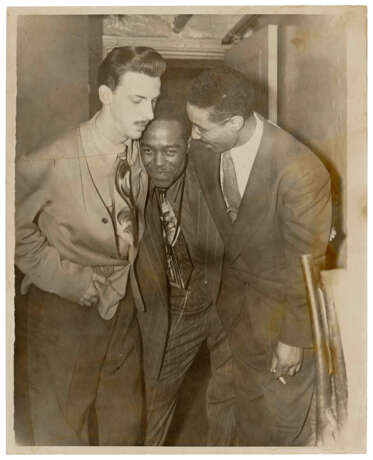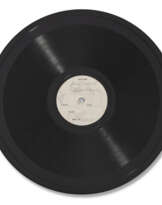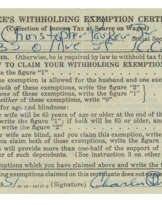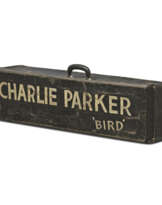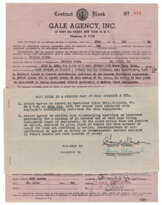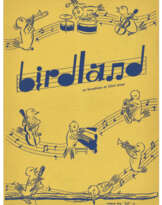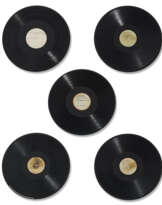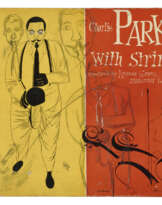Six original acetate recordings of live performances by Charlie Parker, recorded by Dean Benedetti in Los Angeles, 1947, and used in the production of the Mosaic Records box set The Complete Dean Benedetti Recordings of Charlie Parker, released in 1990
28.09.2023 13:00UTC +00:00
Classic
Prix de départ
8000GBP £ 8 000
| Auctioneer | CHRISTIE'S |
|---|---|
| Lieu de l'événement | Royaume-Uni, London |
| Commission | see on Website% |
Archive
La vente aux enchères est terminée. Vous ne pouvez plus enchérir.

ID 1016377
Lot 174 | Six original acetate recordings of live performances by Charlie Parker, recorded by Dean Benedetti in Los Angeles, 1947, and used in the production of the Mosaic Records box set The Complete Dean Benedetti Recordings of Charlie Parker, released in 1990
Valeur estimée
£ 8 000 – 12 000
Charles “Charlie,” Jr. Parker
PARKER, Charles “Charlie,” Jr. (1920-1955).
Six original acetate recordings of live performances by Charlie Parker, recorded by Dean Benedetti in Los Angeles, 1947, and used in the production of the Mosaic Records box set The Complete Dean Benedetti Recordings of Charlie Parker, released in 1990.
‘For decades,’ reports David Remnick of The New Yorker, ‘stories circulated in the jazz world that Dean Benedetti, a saxophonist of modest distinction, upon hearing Parker play in the mid-forties, threw his own horn into the sea and pledged himself to follow Parker everywhere he went, recording his hero’s performances. Benedetti was said to have obtained, through Army connections, a Nazi-era German wire recorder, and he carried out his mission at clubs, concert halls, and private apartments all over the world.’ The first recordings date from a jam session at the Hollywood home of trumpeter Chuck Copely on 1 February 1947, following Parker’s release from a six-month detoxification stint at Camarillo State Hospital. After buying a Wells-Gardner portable disk-cutter at Sears, Benedetti recorded Parker playing with Howard McGhee’s band over eleven consecutive appearances at the Hi-De-Ho club in Los Angeles from 1-13 March 1947. ‘Hell bent on self-improvement,’ states Parker scholar Lawrence O. Koch, ‘[Benedetti] was mainly interested in Bird’s solos… and often recorded only those things that could be used for study. His portable disc cutter was set up in a booth next to the Hi De Ho bandstand, and this became his workshop.’
‘To Dean, the solos were priceless,’ wrote Parker biographer Ross Russell. ‘They were being expended upon thin air, sermons shouted into a desert. No one wrote them down. No two were alike. Charlie often quoted but never repeated himself. Every solo was unique… Listeners marvelled and later recounted the exploits of the night before, building the legend of the Bird, but no one did anything. Dean, in his austere, priestly fashion, was the first to remedy the situation.’
Benedetti made further recordings at the Three Deuces and Onyx clubs in New York in March and July 1948, before returning west, where he was diagnosed with a degenerative muscle disease and died at the age of 34. Dubbed by Koch ‘the jazz equivalent of the Dead Sea Scrolls,’ the legendary recordings were presumed lost following Benedetti’s untimely death in 1957, until Benedetti’s brother contacted Bob Porter of Mosaic Records in 1988, revealing that the treasure trove had been stashed in his bedroom closet for thirty years. Engineer and jazz historian Phil Schaap spent the next two years identifying and restoring the collection of 58 acetates and 14 fragile tape recordings, before the seven hours of fragmentary improvised material was released as a 10-record 7-CD box set in 1990. Koch, Yardbird Suite (1999), 106-8. Remnick, The New Yorker (12 May 2008). Russell, Bird Lives!, 182.
One 8-inch and five 10-inch acetates, the labels variously inscribed by Dean Benedetti with performance dates, song titles and collaborators, in later sleeves, the majority of the sleeves annotated by jazz historian Phil Schaap, all of the recordings released as part of The Complete Dean Benedetti Recordings of Charlie Parker, the records comprising:
- a double-sided 8-inch acetate, with Packard-Bell Phonograph Record labels annotated by Benedetti ‘Sept Rain, Charles Parker, September, Mar. 1-47’, the other side marked ‘Void’ but with visible grooves, the record pictured on the front cover of the Mosaic box set;
- a double-sided 10-inch acetate, with Soundcraft labels annotated by Benedetti, side one inscribed ‘Cherokee & Copley’s’, side two inscribed ‘J. McShan? [sic], Ray, Hootie Blues’, with later sleeve annotated by Schaap;
- a double-sided 10-inch acetate, with Soundcraft labels annotated by Benedetti, side one inscribed ‘Lullaby, Tunisia, 3-6-47’, side two inscribed ‘Perdido, Very Thought. Big Noise (4 bars), Hot House (last bars)’, with later sleeve annotated by Schaap, the record pictured on page 27 of the box set booklet;
- a double-sided 10-inch acetate, with Soundcraft labels annotated by Benedetti, side one inscribed ‘3-6-47, Now’s The Time – loss, Big Noise, Hot House’, side two inscribed ‘3-6-47, Body (bridge), Ornithology, Sentimental Journey, Berg Theme, Groovin’’, with later sleeve annotated by Schaap;
- a double-sided 10-inch acetate, with red National Hollywood Recording Disc labels annotated by Benedetti, side one inscribed ‘Stardust, Hot House’, side two inscribed ‘Man I Love, Berg Theme, Groovin’ Hi’, with later sleeve annotated by Schaap, the record pictured on page 28 of the box set booklet;
- a double-sided 10-inch acetate, with red National Hollywood Recording Disc labels annotated by Benedetti, side one inscribed ‘Bird, Ghost, Indiana, Prisoner, Disorder’, side two inscribed ‘Ornith, Sept., Big Noise;
housed in an aluminium flight case and accompanied by documents concerning the provenance. Provenance: Dean Benedetti (1922-1947) – by descent to his brother, sold to Mosaic Records in 1987 – Dan Morgenstern (jazz historian and director of The Institute of Jazz Studies from 1976-2012) – Norman Saks (jazz collector).
[With:] a vintage gelatin silver press print of Dean Benedetti, Charlie Parker and drummer Max Roach leaving the Three Deuces jazz club in New York, April 1948, 255 x 204 mm. Provenance: The Norman R. Saks Collection (Vail, pl.32).
Further details
These recordings are offered for sale without copyright, broadcast rights, performers consents and other reproduction rights. The buyer must apply to the relevant parties to obtain such clearance and consents as may be necessary.
| Adresse de l'enchère |
CHRISTIE'S 8 King Street, St. James's SW1Y 6QT London Royaume-Uni | |
|---|---|---|
| Aperçu |
| |
| Téléphone | +44 (0)20 7839 9060 | |
| Commission | see on Website | |
| Conditions d'utilisation | Conditions d'utilisation |
